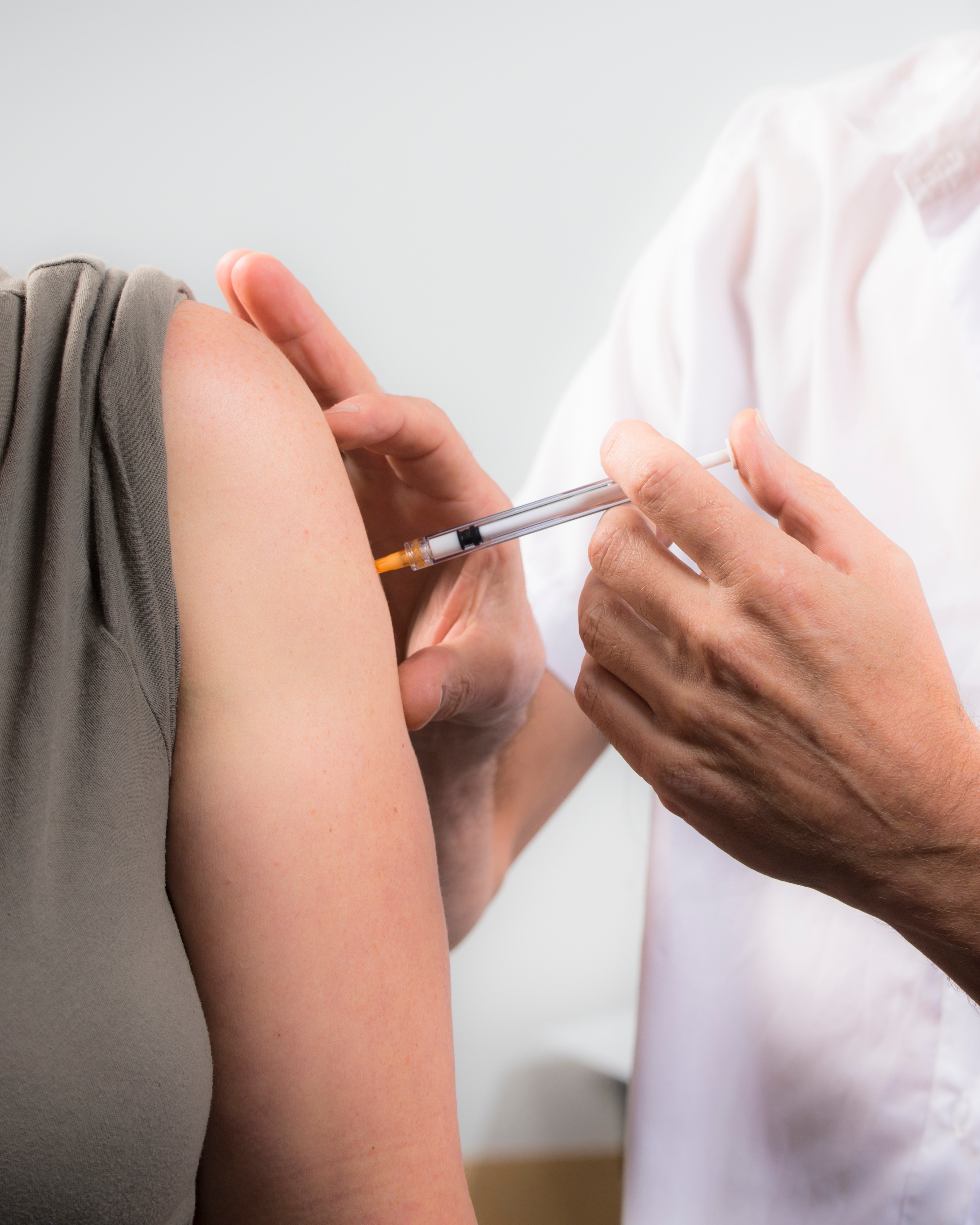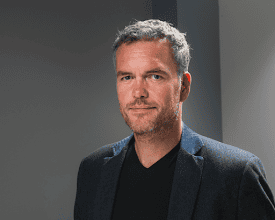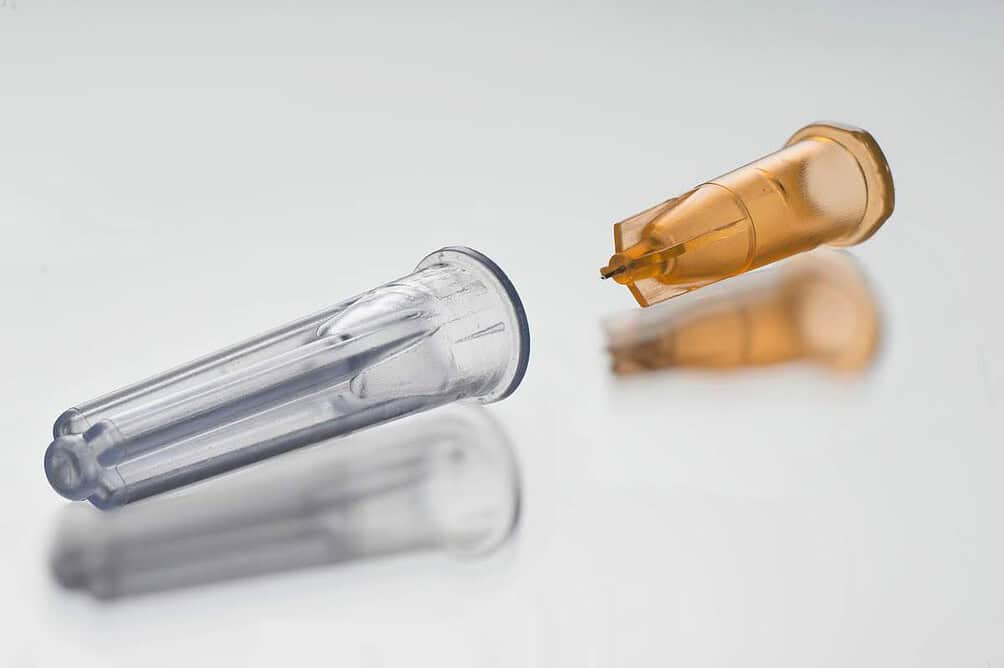
One company is developing advanced, needle-free injection technology and is still in the startup phase. The other produces tiny needles that inject in (and not under) the skin and has sold millions of microneedles.
What binds them together? Both FlowBeams and Uneedle are MedTech spin-offs from the University of Twente (UT). Both are developing a product on a microscale, and both intend to use their technology to make the lives of millions of people easier, safer, and healthier. If at all possible, from Twente.
IO spoke with Jeroen Wissink, CEO of Uneedle, and Lea Milovich, CEO of FlowBeams, about the need for a long breath, entrepreneurship in the MedTech sector, and the opportunities the Twente ecosystem offers them.
About Uneedle
Uneedle designs and manufactures microscopic needles that inject intradermally – that is, into the skin rather than a blood vessel, muscle, or tissue. The skin contains the highest density of immune cells needed for an immune response. The great advantage is that the fluid interacts with the immune system immediately. This reduces the need for vaccines by five to 10 times.
About FlowBeams
FlowBeams is developing a technology that allows people to inject liquids, such as vaccines or insulin, without needles. This would significantly reduce the risk of infection, be virtually painless, and also prevent a lot of waste.
Newer, smaller, and more precise
The concepts of Uneedles and Flowbeams have been introduced previously. In the 1960s, the U.S. military vaccinated needle-free, and microneedles were invented more than 30 years ago (also in Twente). But both companies innovate existing technology to create a new market.

Wissink: “UT sold the first microneedle patent to an Israeli company in the 1990s. I was part of that research group at the time. In 2009, a customer called from Sweden. They were not satisfied with the product; whether we could develop an improved version for them. There was no other party that could do it for them. Then, we teamed up with the University of Twente International Ventures Fund (UTIV) to see if we could still develop a new product. We already had the customer in.”
It is typical of the biotech and pharma sectors: companies develop a new product and prove its efficacy in an extensive development process but are not allowed to modify the product. Whereas Twente’s first microneedles used three tiny needles with a very short bevel (the length of the needle’s opening), Uneedle has now reduced that to one microneedle with an ultra-short bevel. “Microneedles are small, and so is the passage, the ‘inner bore.’ As a result, you need more pressure to get a liquid through the passage into the skin. That’s easier with one slightly larger hole you have than with three smaller ones.”
Rapid injection with a wafer-thin fluid jet
Needle-free injection is also not new. For example, injection using air pressure or springs is already used. But these options have drawbacks. For example, there is more risk of injection hazards; the devices used to administer the injection are not handy and are expensive.

So FlowBeams takes a different approach. In 2015, co-founder and UT professor David Fernandez Rivas devised an alternative: injecting liquid with a laser. It works like this: the liquid (the vaccine) is heated in a narrow channel using laser technology. A small bubble is formed and continues to inflate. It then receives the impulse to be shot outward. Thus, the liquid penetrates the skin; in less than 1 millisecond, a vaccine or drug can be administered at 100 km/h. Virtually painless, without waste, and with a handheld device. Milovich: “Before the COVID-19 pandemic, we used 44 million needles worldwide per day. That number is many times higher now. In the Netherlands, 8% of waste comes from the medical sector. With our product, we contribute to a greener health sector.”

‘Pure Twente technology’
FlowBeams’ fluid jet and Uneedle’s micro-needle are thinner than a hair and barely visible to the naked eye. “Pure Twente technology,” reads Wissink’s description. “Our product stems from over thirty years of research and development done here. Our needle is a silicon product that we produce with semiconductor technology. The tip of our needle is extremely sharp. That’s because we etch it here in the MESA+ Nanolab with semiconductor equipment. People have been working with this technology here for many years. In the MESA+ Nanolab, scientists, students, and entrepreneurs from all backgrounds have met each other for years. This is often taken for granted when, in fact, it is quite special. It creates a natural bustle in this place.”
Wissink’s career is set against the backdrop of Kennispark Twente’s innovation campus. Where thousands of micron needles now roll off the conveyor belt in the High Tech Factory, he graduated from UT’s Faculty of Electrical Engineering and Nanotechnology in 1997 in the same building. He founded several MedTech companies – including Medspray and Nanomi – and has been a director of Uneedle since 2017. If he could give one tip to budding entrepreneurs, it’s that they engage with potential customers right at the beginning. “Ultimately, it’s about the market needing your product, so there’s no point in thinking up all kinds of things from behind your desk.”


The eve of a new phase
FlowBeams also stands on the shoulders of Twente’s MedTech ecosystem. “Our foundation consists of almost a decade of scientific research,” Milovich said. “If you take the initiative yourself, budding entrepreneurs have many tools and opportunities here. For example, we’ve had help from Novel-T, UT’s TechMed Centre, and MESA+. People here are willing to help each other and set aside time to spar.”
Earlier this year, FlowBeams raised €2.5 million in funding from European Innovation Council. Milovich: “It feels like we are on the eve of a big, new, fascinating phase. We have been working for three years, but the commercial activities are only now starting. Previously, activities centered mainly around technological developments at the university. Now we are entering the market. Without this ecosystem, we wouldn’t be where we are today. So we want to build on that. FlowBeams must become an international success – but together with the region.”
About MedTech Twente
MedTech Twente accelerates life-changing medical technology innovation. It does so from idea to market – by connecting companies, healthcare organizations, and research and knowledge institutions and giving them access to – among others – cutting-edge facilities, programs, and projects. The innovation cluster strengthens regional and (inter)national cooperation with an impact on global healthcare challenges.

